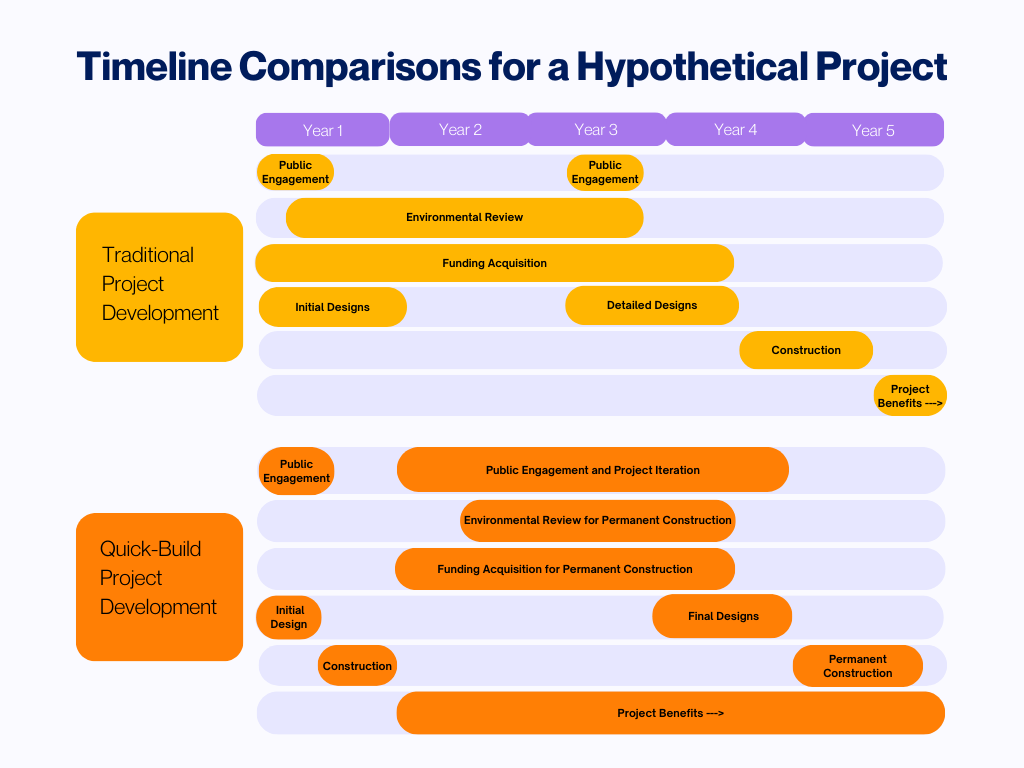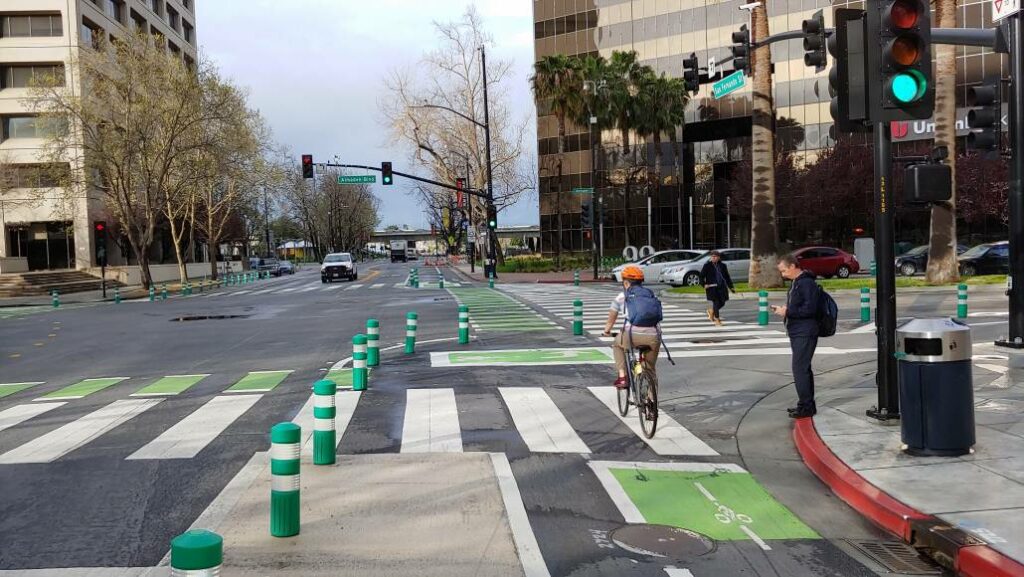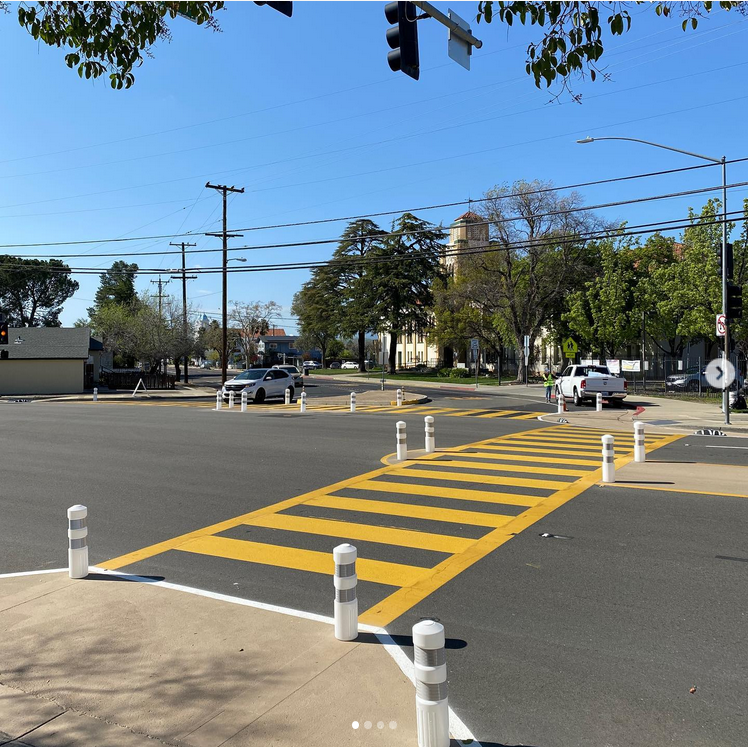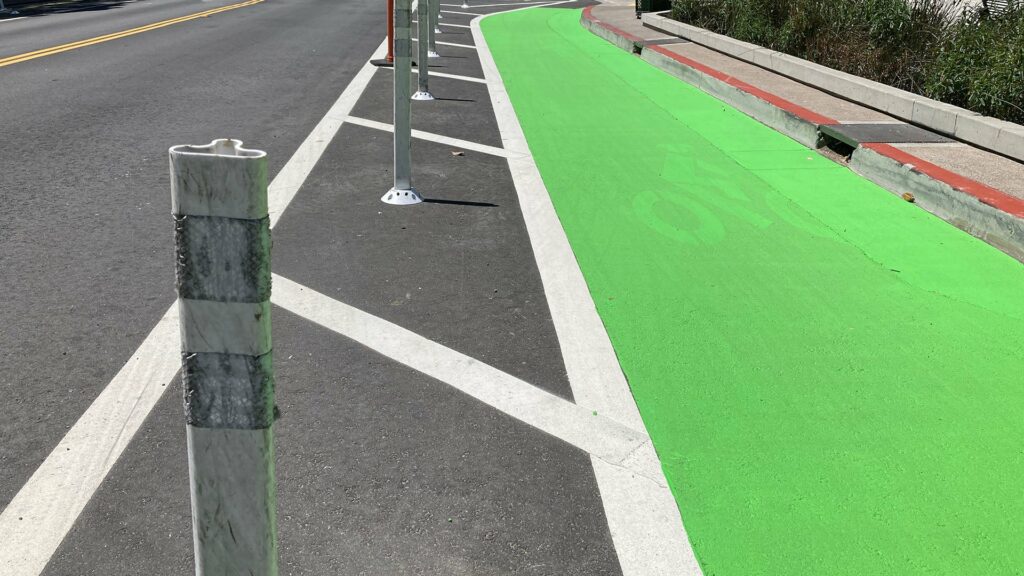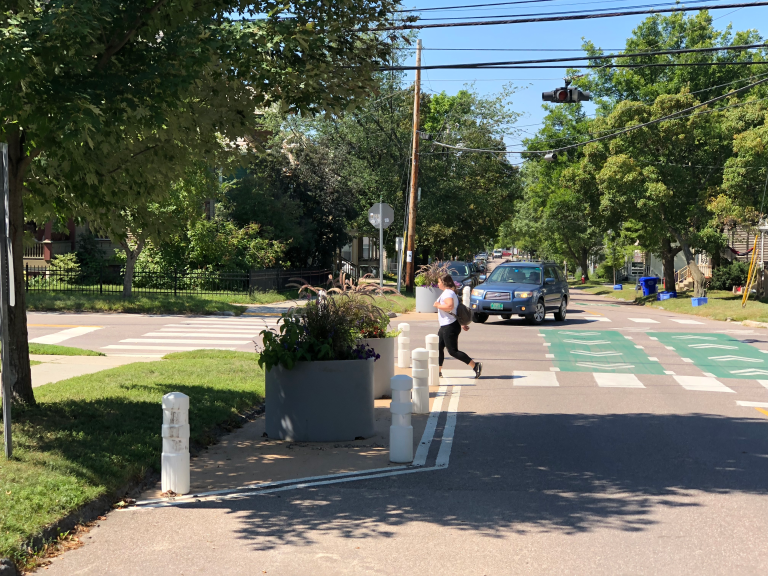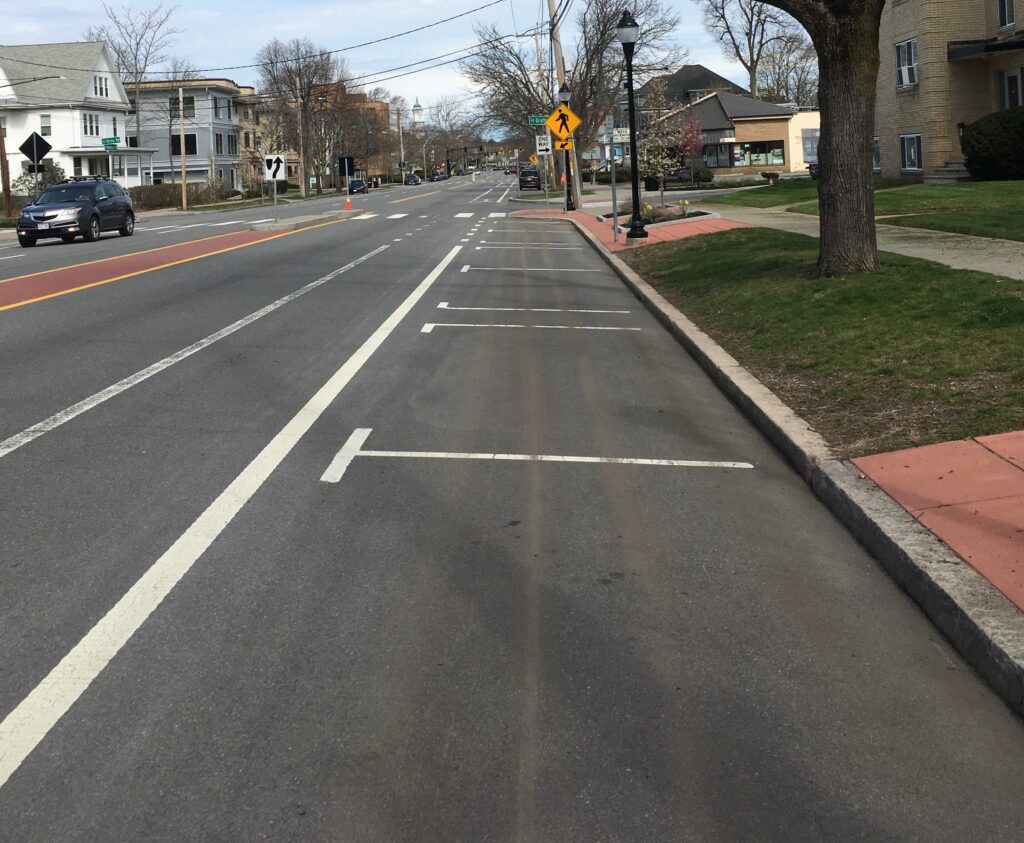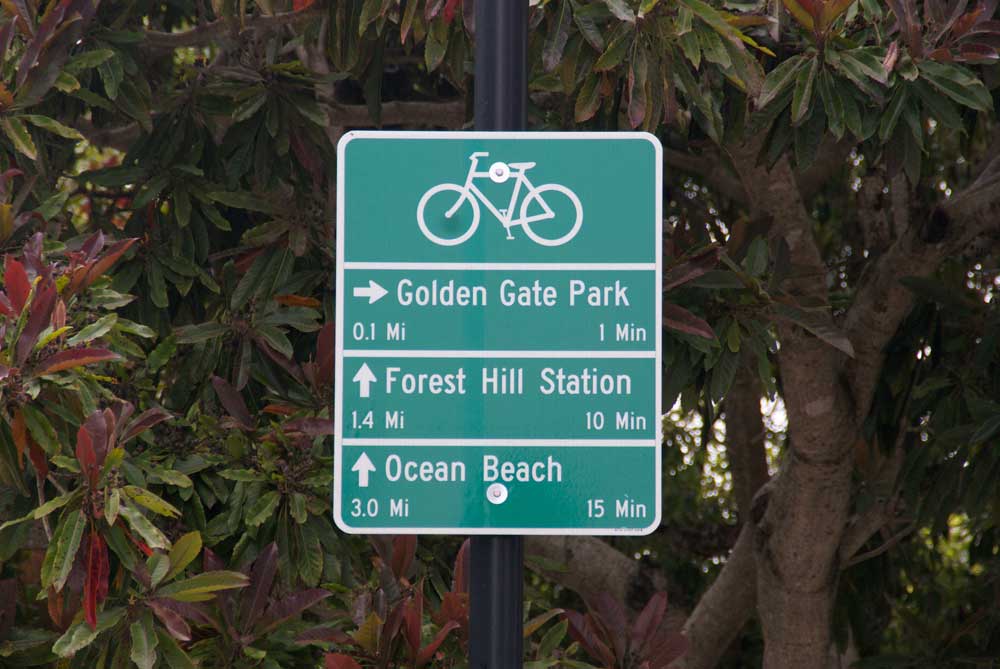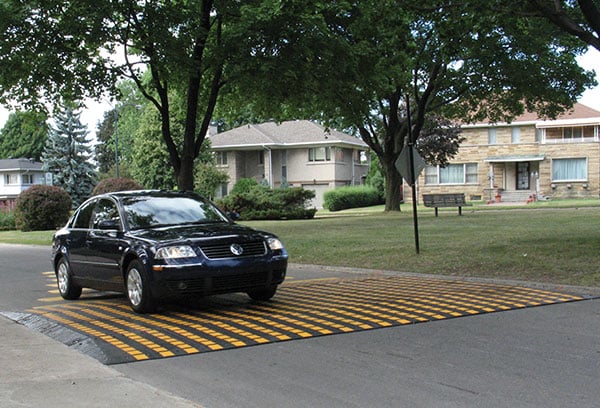
Quick-Builds are undertaken in many US communities, so there is precedent for a wide variety of designs and materials based on local needs and desires.
Designs
Agencies do not need to come up with new or unusual project designs or improvements to use a Quick-Build approach. This toolkit includes many examples of well established, evidence-based street improvements that can be implemented using Quick-Build materials and techniques, from protected bike lanes to curb ramps to raised crosswalks.
However, the flexibility of the Quick-Build approach can allow agencies to test out new innovations, or designs which are well established in other communities but are new in the local context. When testing out new designs, it is especially important to ensure that they are safe and accessible for bicyclists, pedestrians and transit riders of all ages and abilities.
The Importance of Networks
Projects which complete or enhance a complete safe, low-stress network can have a much larger impact than projects built in isolation. The Quick-Build method allows agencies to work at the community level by rapidly improving or filling in gaps in their low-stress bike and pedestrian networks. Jurisdictions can take advantage of Quick-Build designs for deploying infrastructure improvements rapidly, effectively, and with participation from the public. In this way, Quick-Build is also a good complement to an effective Complete Streets Policy, such as the policies adopted by the cities of Eureka and Arcata.
Materials
Many Quick-Build materials like paint and signage are very familiar to local agencies and the public, as they are also used in more traditional projects. However, there are also new and innovative materials that can be applied specifically to Quick-Build projects. Examples include quick-install speed bumps and curb ramps, water filled barriers, planters, armadillos, and a variety of bollard designs. All these materials and more are commercially available.
Quick-Build materials vary in cost, from inexpensive materials like road paint, to slightly more expensive materials like plastic bollards and delineators, to more expensive traditional materials like concrete or metal. The latter are used less frequently in Quick-Build projects.
Other organizations have built helpful libraries of Quick-Build construction materials. Appendix A from Alta’s Quick-Build guide includes guidance about installation, maintenance, and cost. A resource from the Tactical Urbanist’s Guide compiles materials used for temporary demonstration projects, of which many are compatible with Quick-Build projects. The Quick-Build Materials webpage from the San Francisco Bay Area’s Metropolitan Transportation Commission is another useful resource.
More in the Quick-Build Toolkit
